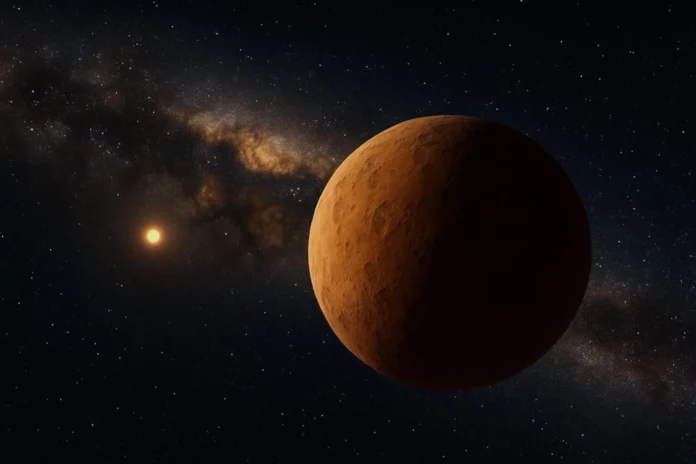Astronomers in Japan have spotted a distant object orbiting the Sun far beyond Neptune, indicating an extraordinary event that took place in the early years of the solar system.
Astronomers made the discovery using the Subaru Telescope, mounted on top of an extinct volcano in Hawaii. They observed a small object orbiting at a distance of 252 AU from the Sun, in which one AU is equal to the average distance between the Sun and the Earth. Scientists have given it the official designation 2023 KQ14 and named it Ammonite, in honor of an extinct group of marine animals – a nod to its status as an extreme relic of the early solar system.
For comparison, the average distance of Pluto from the Sun is about 40 AU, so 2023 KQ14 is quite far away. At a distance of 23.4 billion miles (37.7 billion kilometers), the light reflected from the ammonite takes about 34 hours to reach Earth.
The discovery, published on Tuesday in the journal Nature Astronomy, marks the fourth detection of a “sednoid”. This group of distant trans-Neptunian objects has extremely elongated orbits that extend past the Kuiper Belt. Unlike other objects orbiting the Sun past Neptune, the sednoids are separated from the giant planet, meaning they are not affected by its gravitational field. Astronomers discovered the first sednoid, named Sedna, in 2003.
Astronomers first discovered ammonite in 2023 as part of the Subaru FOSSIL project (Formation of the Outer Solar System: An Icy Legacy). Further observations in July 2024 using the Canada-France-Hawaii Telescope confirmed the discovery by revealing the object’s orbit. It was also spotted in archival images taken in 2021 and 2014, allowing astronomers to model its orbit with greater accuracy.
Using computer modeling, the researchers behind the discovery suggest that Ammonite has maintained a stable orbit for at least 4.5 billion years. At its closest approach to the Sun, it is 66 AU away from the luminary. Unlike its sednoids, Ammonite now moves in a different orbit. Modeling, however, has shown that the orbits of all four known sednoids were once very similar, about 4.2 billion years ago. This casts doubt on the existence of the theoretical Ninth Planet.
The Sednoids are one of the key pieces of evidence for the long-standing theory that a massive ninth planet orbits the Sun behind Neptune. The group of small objects moves in an elongated orbit that cannot be explained by the gravitational influence of the known planets in the solar system, suggesting that the ninth, undiscovered planet may be attracting sednids.
“The fact that Amonite’s current orbit does not match the orbits of the other three sednoids reduces the likelihood of the ninth planet hypothesis,” said Yukun Huang, a researcher at the National Astronomical Observatory of Japan who conducted the simulation of Amonite’s orbit, in a statement. “It’s possible that the planet once existed in the solar system but was later ejected, causing the unusual orbits we see today.”
Ammonite is estimated to be 136 to 236 miles (220 and 380 kilometers) wide. Although tiny, its presence indicates that something much bigger is going on here. “Ammonite has been found in a distant region where Neptune’s gravity has little influence. The presence of objects with elongated orbits and large perihelion distances in this region means that something extraordinary happened in the ancient era when ammonite formed,” said Fumi Yoshida, a planetary scientist and co-author of the new study, in a statement. “Understanding the orbital evolution and physical properties of these unique, distant objects is crucial to understanding the full history of the solar system.”









